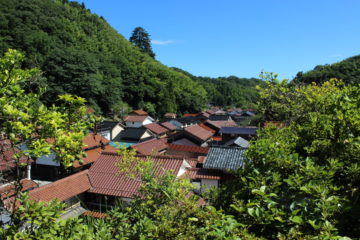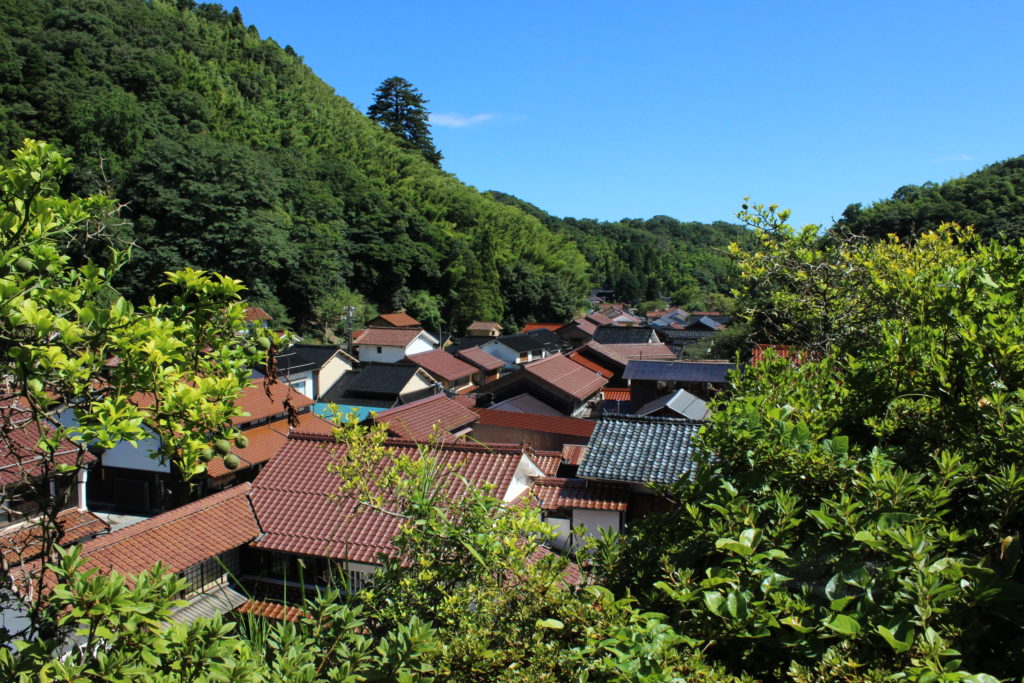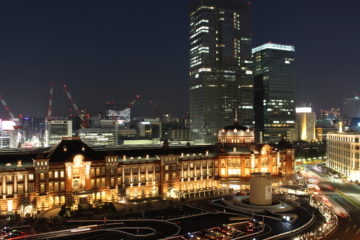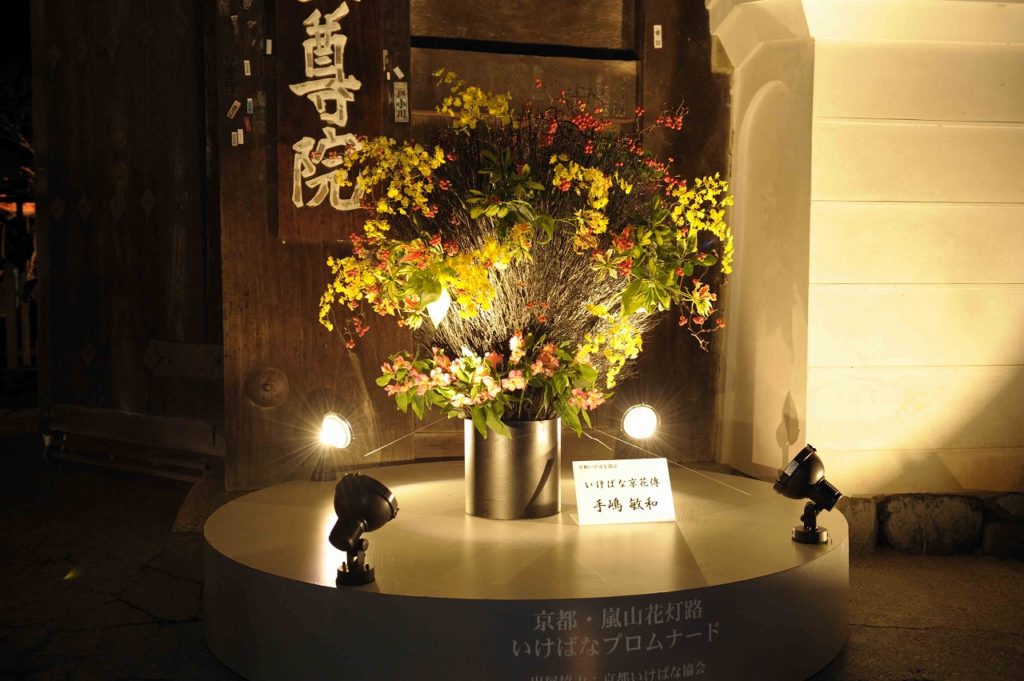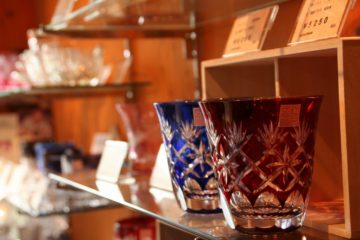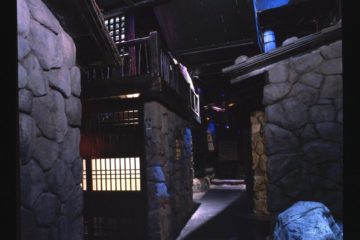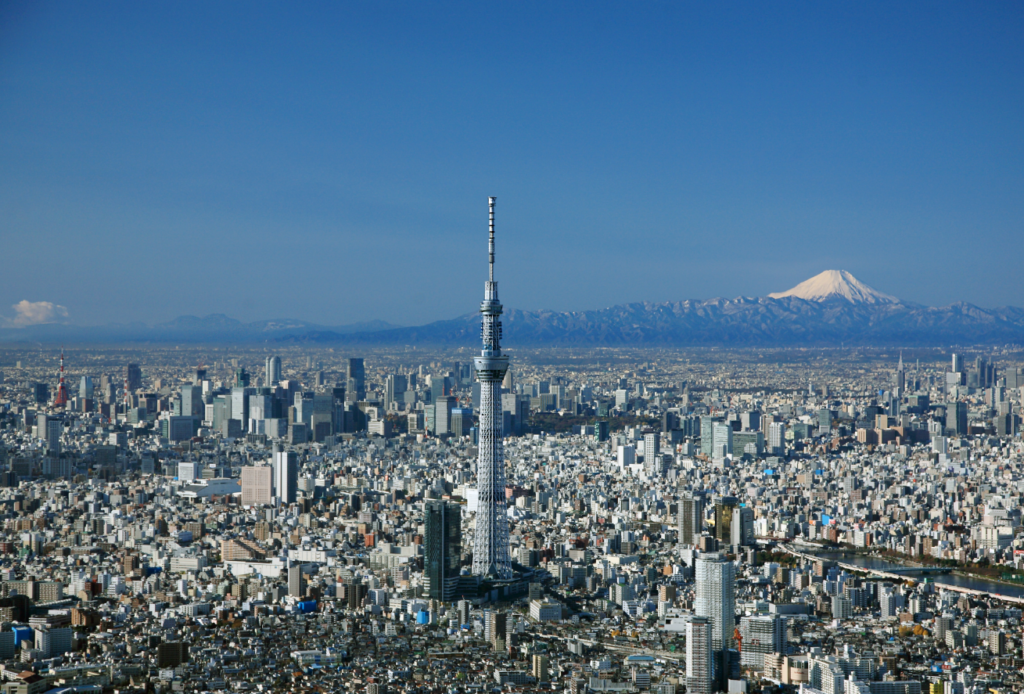
Towering Over Tokyo
The Eastern capital home to neo-traditional culture, trend setting innovations, and internationally acclaimed cuisine is now also home to not one but two symbolic towers.
Tokyo has for a long time been symbolized by a 333 meter (1093 ft) tall steel structure of crimson and white, commonly referred to as the Tokyo Tower. When NHK, the Japan Broadcasting Corporation began first broadcasting television in 1953, they followed through with the construction of their very own transmission tower. This resulted in a frenzy of private broadcasting companies initiating operation. In order to prevent a multitude of private transmission towers from eventually taking over the city, the government decided on building one solitary tower that would be capable of transmitting throughout the Kanto region. Construction of the Tokyo Tower took off in June of 1957, and was completed merely 15 months later, on December 23th, 1958. At the time of its completion, Tokyo Tower was the world’s tallest freestanding tower in the world. However it still managed to weigh 3,000 tons less than its model, the Eiffel Tower, despite the fact that the Eiffel Tower came in 13 meters shorter. The 4,000 ton creation was quick to be accepted into the hearts of many, and since its erection has made countless appearances in movies, dramas, novels, and mangas.
Yet Tokyo Tower may be feeling a little lack of affection now that there is a new contender in the field, TOKYO SKYTREE. Completed almost exactly a year ago on February 29th, 2012, TOKYO SKYTREE was built with the purpose of providing full and complete coverage of digital terrestrial television broadcasting. This was a duty that the Tokyo Tower lacked in height to accomplish ever since the digital television transition finalized in July of 2011. The TOKYO SKYTREE towers over all in sight with its groundbreaking height of 634 meters (2080 ft), also making it the current tallest tower in the world. Creating a world record was an unparalleled feat requiring over 800 million US dollars in funds, 4 years 7 months of preparation, an additional 3 years 7 months of construction, and a total of 580,000 workers. Extensive media coverage throughout its various stages of construction resulted in immense public interest and growing anticipation for its completion. When it was finally opened to the public in May of 2012, the tickets to the observation decks were fully booked for an entire 2 months, and within the first week TOKYO SKYTREE had attracted a total of over 1.6 million visitors. While 1.6 million accounts to a staggering 1/8 the entire population of Tokyo, TOKYO SKYTREE expects to attract 20 times that amount – 32 million visitors – within the first year. And with over 300 entertainment and leisure facilities, cutting edge technology, and delicate attention to detail, 32 million may turn out to be a modest underestimation.
Now that Tokyo is home to not one but two broadcasting towers, and two that completely differ in style at that, the citizens of Tokyo have the choice of choosing their favorite. There may be more diehard Tokyo Tower fans than enthusiasts of TOKYO SKYTREE, or it may in fact be vice versa. However no matter what the popularity consensus may be, there is no denying that both are towers of great significance representing the old and the new straight from the heart of Tokyo.
Did you know…?
Tokyo Tower:
・ There is a Shinto shrine on the second floor (150 m/492 ft) which is the highest located shrine within central Tokyo.
・ Ninety U.S. tanks were recycled to produce 3,000 tons of metal to construct the upper half of the tower.
・ The entire tower was assembled manually, requiring steeplejacks to work in extreme altitudes.
・ Every 5 years a fresh coat of paint is applied using 28,000 liters (7,400 US gal) of paint and taking a whole year to complete.
・ Tokyo Tower was built to withstand winds over 220 km (140 mi) per hour.
TOKYO SKYTREE:
・ The height signifies the former name of the region where TOKYO SKYTREE now stands, “Musashi”, with the digits spelling it out (6=“mu”, 3=“sa”, 4=“shi”)
・ The official name was decided after a nationwide online vote, with the second runner up being “Tokyo Edo Tower”.
・ The elevator leading to the lower observatory deck moves at a speed of 600 m (1968 ft) per minute.
・ TOKYO SKYTREE uses all LED lights supplied by Panasonic Corporation allowing for over 16 million different variations of lighting.

